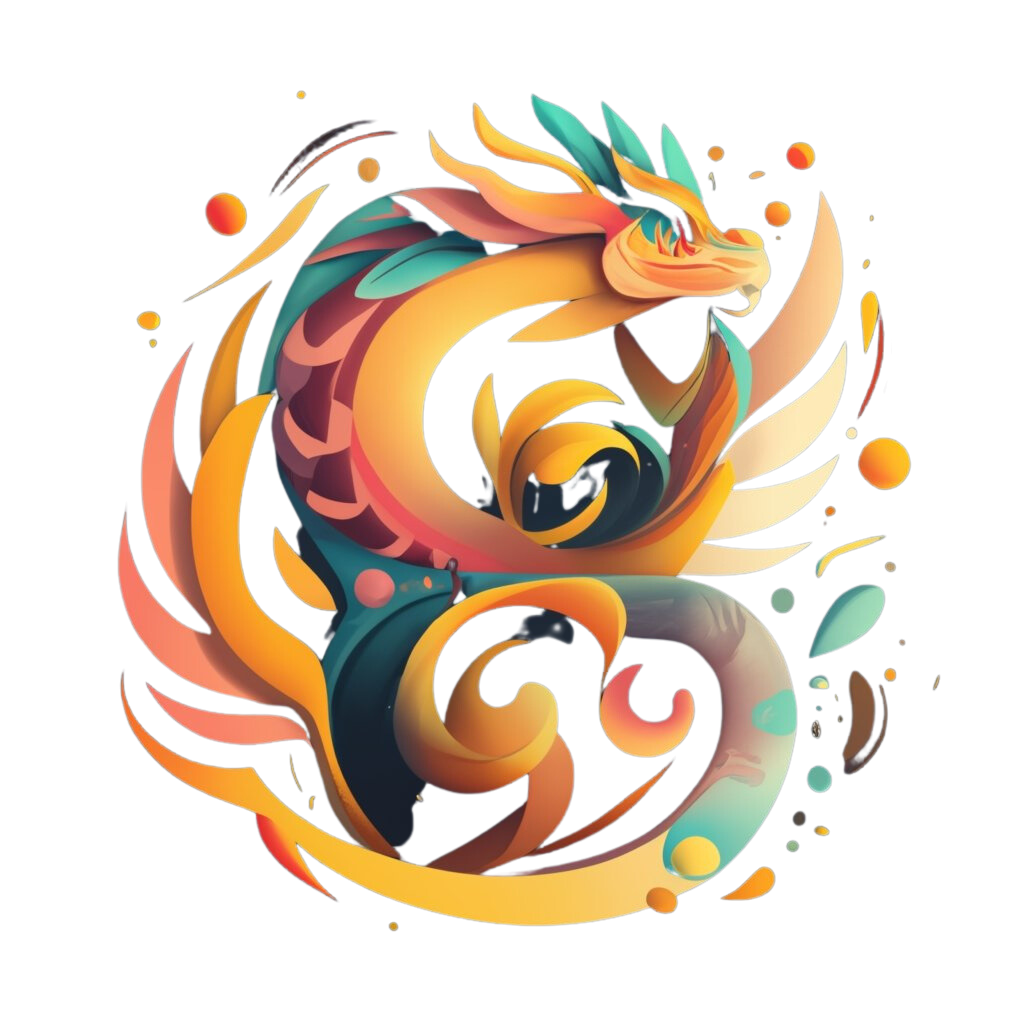The cultural heritage of Bengal, spanning West Bengal (India) and Bangladesh, is deeply tied to folklore. Generations have passed down stories filled with mythical creatures that shaped the region’s imagination and identity. These tales, influenced by Hindu, Muslim, and tribal traditions, blend entertainment with lessons about life, morality, and society.
From river spirits to shape-shifting demons, these magical beings have haunted stories for centuries. Their presence continues to inspire literature, art, and cultural expression across Bengal today.
The Cultural Tapestry of Bengali Folklore
Bengal's folklore reflects a unique mix of religious and cultural influences. Over time, Hindu mythology, Islamic traditions, and tribal beliefs have merged, creating a diverse collection of mythical creatures.
What influences shaped Bengali mythical creatures?
Hindu mythology introduced figures such as the Nāga and Garuda, symbolizing supernatural power and nature. Islamic traditions brought supernatural beings like the Jinn, often seen as powerful and unpredictable. Tribal communities added their own spirits and deities tied to forests, rivers, and mountains.
This cultural blending over centuries gave Bengali folklore its distinctive identity, where mythical creatures mirror both the fears and values of the people.
Cultural Influence | Mythical Creatures | Characteristics |
Hindu | Nāga, Garuda | Symbolize nature and supernatural powers |
Islamic | Jinn | Often depicted as powerful, sometimes malevolent beings |
Tribal | Various spirits and deities | Associated with forests, mountains, and natural phenomena |
Why do spirits and deities feature so prominently in Bengal’s myths?
Spirits and deities often represent nature, morality, or the struggle between good and evil. They explain natural events and human experiences while reinforcing values through story. Their importance can be seen in the rituals, festivals, and customs that honor them.
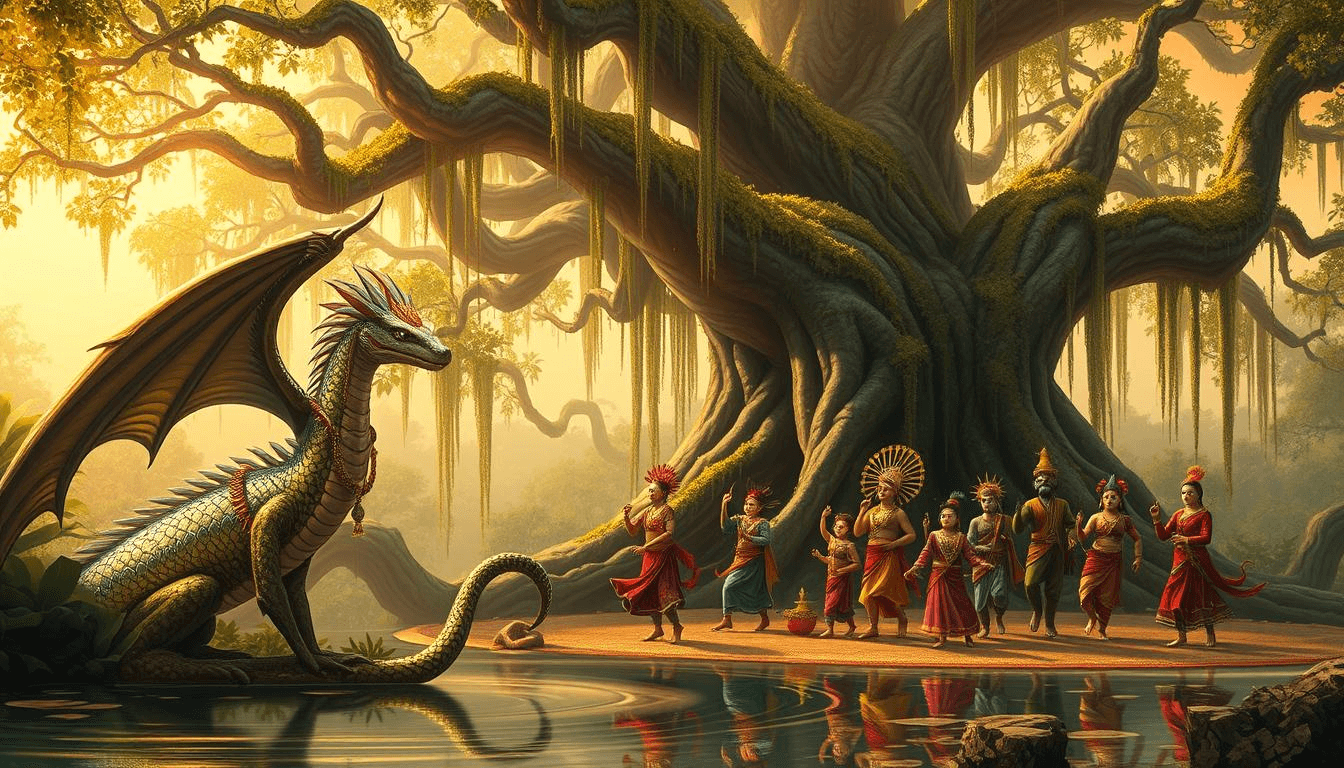
Who Are the Ghostly Figures of Bengal?
Ghosts are central to Bengali folklore. They serve as warnings, moral lessons, or reminders of justice and injustice.
Petni (Shakchunni)
Petni, also known as Shakchunni, is the spirit of a woman who died with unfulfilled desires. She is often described as haunting villages, wearing a sari, and appearing with long hair. Her tale warns of the dangers of injustice and unresolved lives.
Brahmadaitya
The Brahmadaitya is believed to be the spirit of a Brahmin. Unlike other ghosts, he is seen as wise and protective, often serving as a guardian of sacred knowledge.
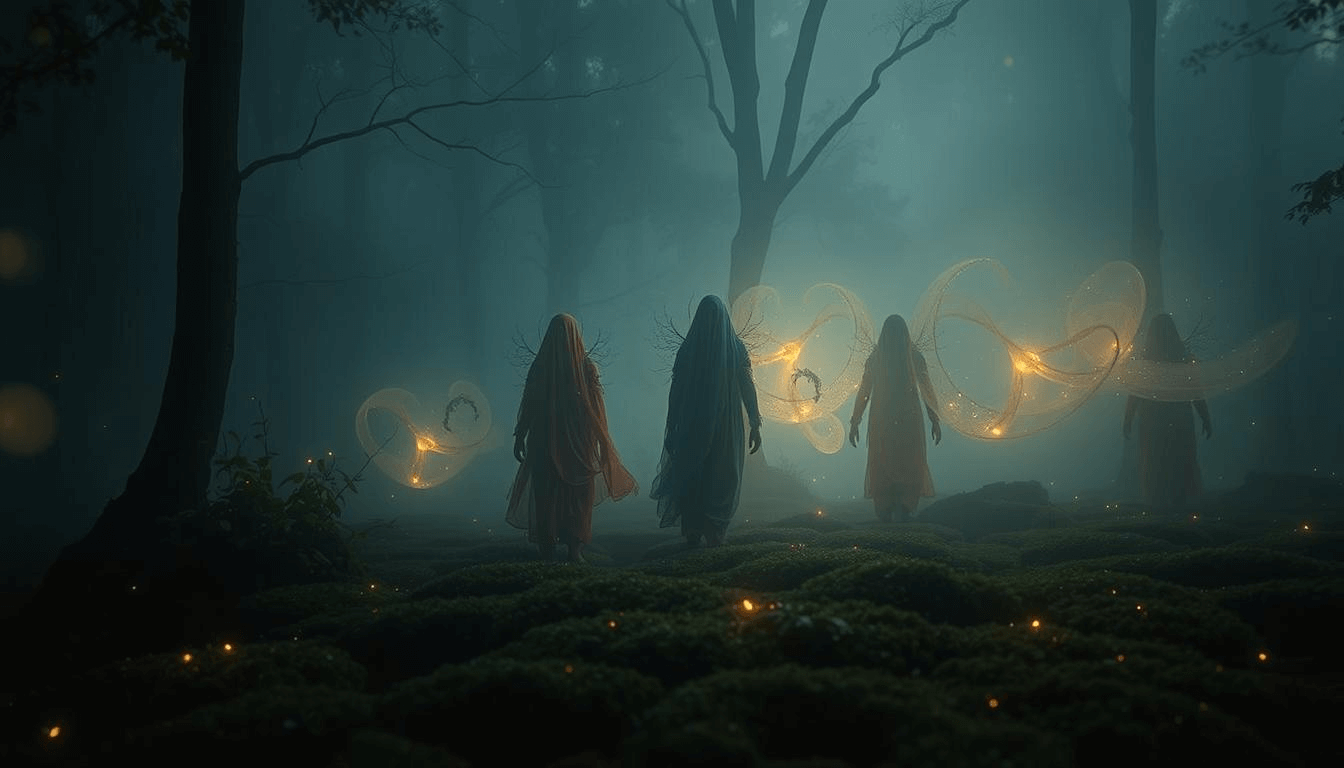
Begho Bhoot
Begho Bhoot is another ghostly figure in Bengali folklore, known for its association with madness or confusion. It is believed to possess individuals, leaving them disoriented or leading them astray.
Pishach and Rakhosh
Pishach are dark spirits linked to evil deeds. Rakhosh, on the other hand, are described as powerful, flesh-eating demons. Both represent destruction and chaos.
Ghostly Figure | Description | Significance |
Petni (Shakchunni) | Female spirit, vengeful | Cautionary tale |
Brahmadaitya | Spirit of a Brahmin | Guardian of sacred knowledge |
Begho Bhoot | Associated with madness | Possesses individuals |
Pishach and Rakhosh | Malevolent spirits | Evil deeds, cannibalism |
These ghostly figures highlight themes of justice, fear, and morality woven into everyday life in Bengali culture.
Mystical Beings Beyond Ghosts
Not all mythical creatures in Bengal are ghosts. Some creatures are tied to music, wisdom, or nature’s mysteries.
The Byangoma birds are one such example. They are often associated with the forest and are believed to possess certain supernatural powers. According to myth, these birds can be pretty mysterious, sometimes even benevolent, and are deeply connected to the natural world.
Who are the Byangoma birds?
The Byangoma birds are mystical creatures with human-like faces and great wisdom. They live deep in forests, far from human eyes, and often guide or warn people in tales. Their presence reflects the belief that nature itself can be a teacher.
What about the Kinnara and Kinnari?
The Kinnara and Kinnari are half-human, half-avian beings revered in Bengali mythology for their beauty and musical talents. They are often depicted as being incredibly skilled in music and dance, captivating all who hear their songs.
Their significance in Bengali folklore is multifaceted:
- They symbolize the harmony between humans and nature.
- Their musical talents are believed to have the power to enchant and heal.
- They are often associated with the arts, representing creativity and inspiration.
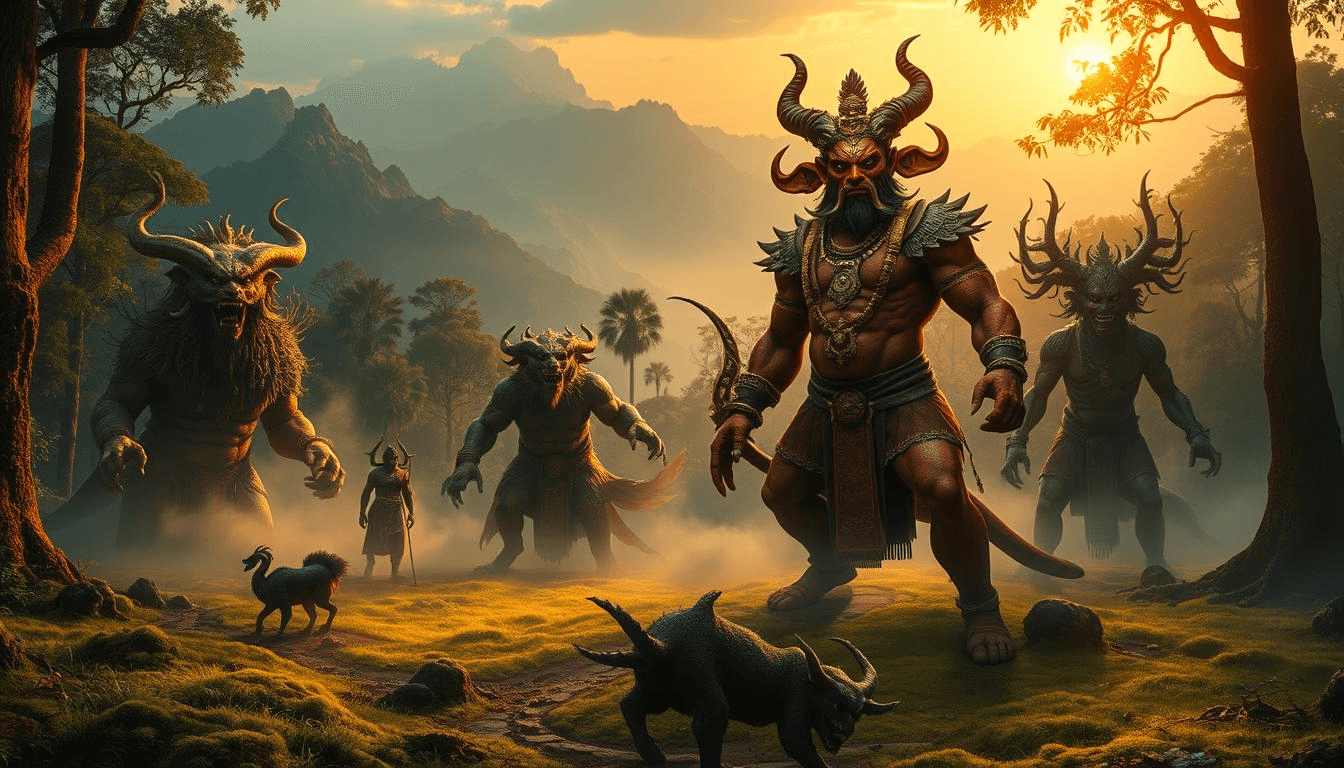
Why Do These Creatures Matter Today?
Bengali mythical creatures still hold relevance, connecting modern life with traditional wisdom.
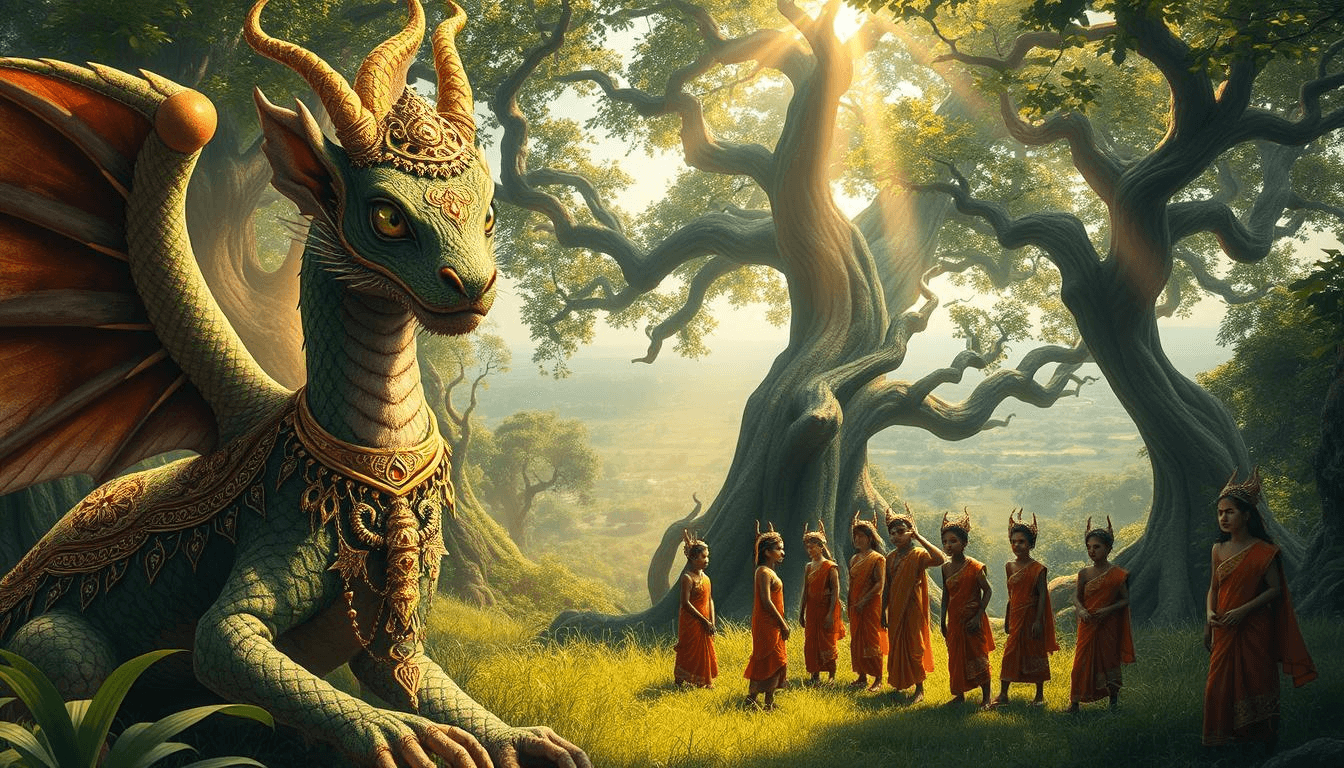
Moral and Social Themes in Bengali Myths
Many myths highlight justice, morality, and human flaws. The story of the Petni often reflects women’s struggles and societal neglect. Other figures warn against greed, dishonesty, or abuse of power. These lessons remain meaningful, teaching values through captivating tales.
Mythical Creatures in Modern Bengali Culture
In contemporary Bengali culture, mythical creatures are being reimagined and reinterpreted in various forms of art, literature, and media. From films and television shows to literature and visual arts, these creatures are being used to explore complex themes and ideas.
For a broader perspective, you may also explore related traditions in Indian Mythical Creatures: Fascinating Creatures Revealed.
Regional Variations and Unique Local Legends
The folklore of Bengal changes with its geography and communities. Myths from the Sundarbans often feature forest guardians, while those in hilly regions focus on mountain spirits.
Diversity Across Regions
- Geography: Mountains, rivers, and forests have shaped the local myths, with creatures often associated with these natural elements.
- Cultural Practices: Local customs and rituals have influenced the characteristics and stories of mythical creatures.
- History: Migration and past events left imprints on local legends.
Lesser-Known Spirits
Not all mythical creatures are widely known, yet they remain vital in local storytelling:
- Danav: Demon-like beings tied to destruction.
- Gandharva: Celestial musicians appearing in select stories.
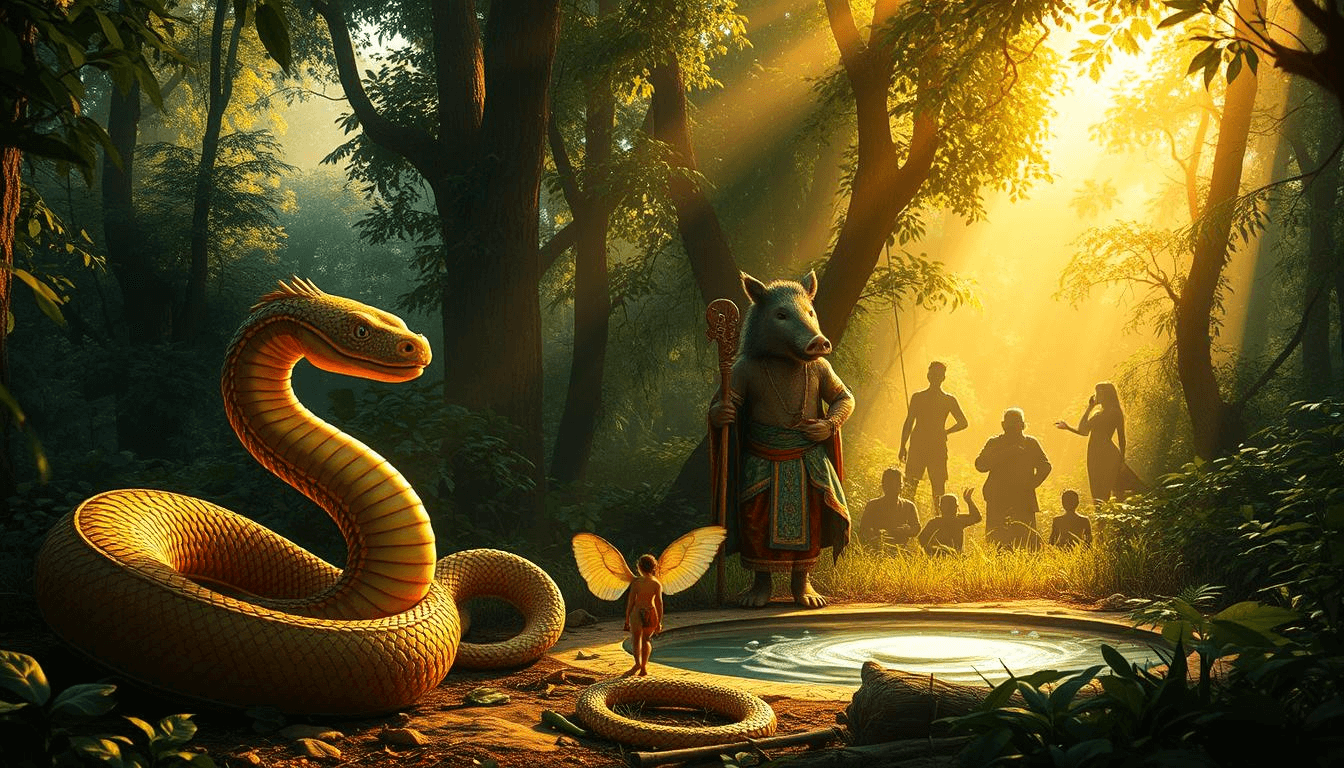
Themes and Symbolism in Bengali Mythical Creatures
Stories of Bengali mythical creatures reflect shared values and collective fears.
Recurring Themes in Bengali Myths
- Morality: Tales show consequences for wrongdoing.
- Nature: Forests, rivers, and wildlife symbolize balance and power.
- Protection: Some beings act as guardians against evil.
- Good vs. Evil: Myths highlight the ongoing struggle between virtue and vice.
Symbols and Visual Elements
Mythical creatures are linked with symbols that give more profound meaning:
Creature | Associated Symbol | Symbolic Meaning |
Petni (Shakchunni) | Ghostly Apparition | Represents the fear of the unknown or unresolved past. |
Brahmadaitya | Brahmin's Spirit | Symbolizes the reverence for spiritual and religious figures. |
Byangoma birds | Wings | Embody freedom and the ability to traverse between different realms. |
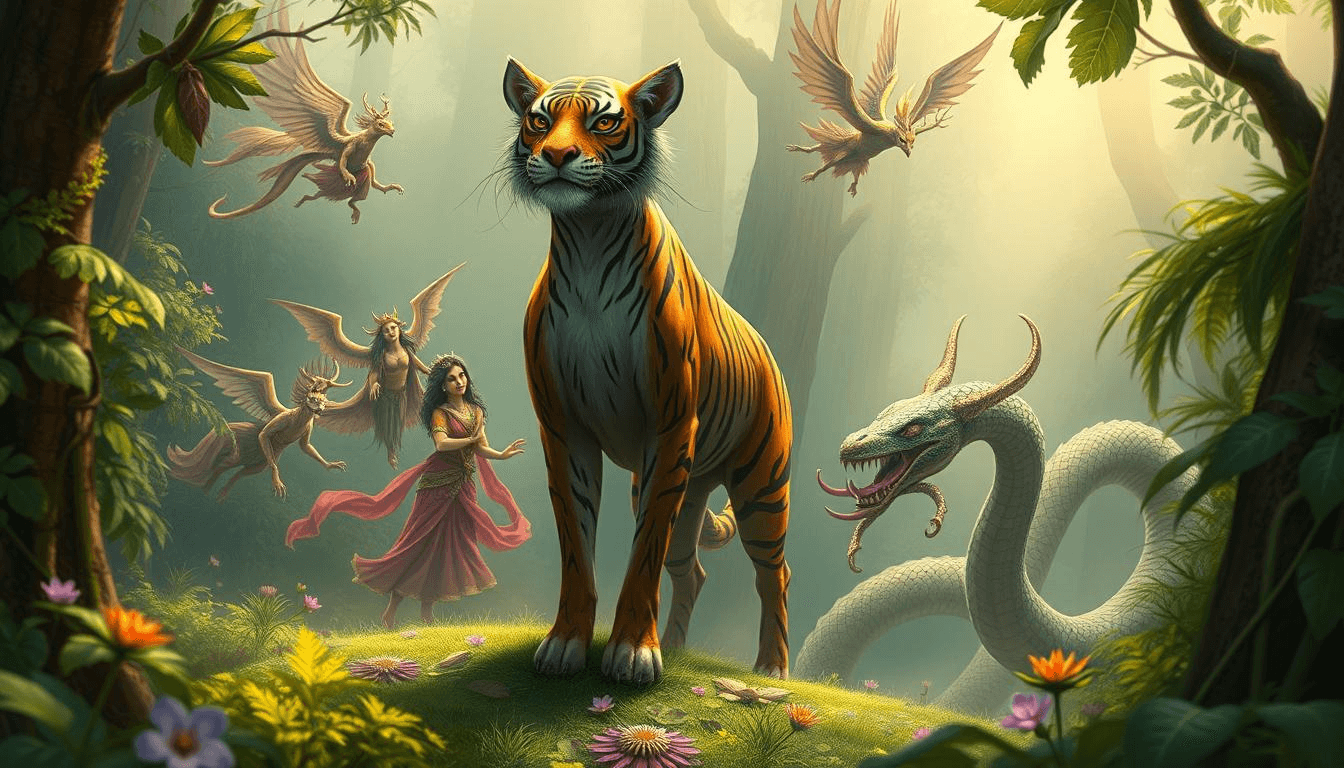
Conclusion
Bengali mythical creatures are more than stories. They mirror history, social lessons, and the bond between people and nature. While rooted in oral traditions, these beings live on in books, festivals, films, and daily conversations.
